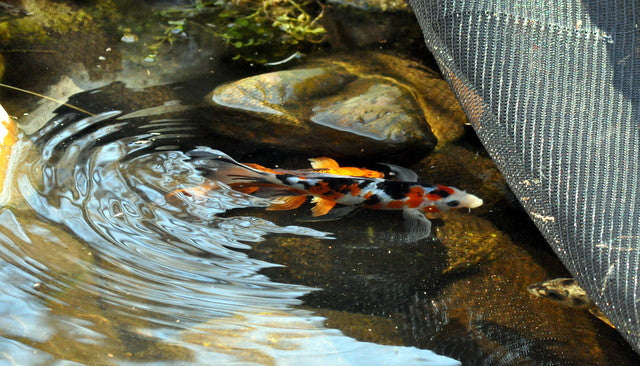I’m a big advocate of small, regular partial water changes in a pond. It’s one of the best ways to keep pollutants from building up in your pond’s system. I’ve talked before about how, when, and why to do partial water changes, but I didn’t mention the Springtime water change that I recommend for most pond owners.
The spring ritual is different for different pond owners, and it changes from year to year. No matter what your ritual is, though, if you experience anything like a real winter, the effectiveness of your biological filtration has gone way, way down with the winter cold. This means that, over the winter, just about every pond experiences some unusual buildup of pollutants.
This buildup can quickly become an issue when the warmth and sun start to get involved. In spring, with little plant cover, the sun can actually be more intense on your pond than any other time of the year. With lots of pollutants to feed on and little else to prevent it, this means algae blooms, especially the planktonic algae that makes your pond go pea-green in the spring. A lot of pond owners get a big algae bloom in spring, then spend much of the rest of the warm months trying to get rid of it. You can help to cut this cycle off at the beginning if you just do a partial water change or two before the algae bloom gets going. Take the organic pollutants that the free algae feeds on out of the water before they get a chance to eat.
As I’ve said before, I’m pretty conservative with partial water changes. I prefer to maintain the balance of an established pond as best I can, taking out only 5 to 10 percent of the water each week. This doesn’t really change in spring, especially since your pond is a bit delicate as it gets on its feet after the cold season. However, getting rid of these pollutants quickly can be a big advantage, so I do get a bit more aggressive than usual with the first water change of the year. I recommend pulling out the normal 5 to 10 percent to avoid shocking the pond, but spacing the first two changes about four days apart instead of the normal week. Be careful, though. With this quick turnaround between water changes, I advocate pre-treating the water going into your pond even more strongly than usual, even if you normally don’t pre-treat.


